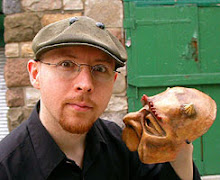First, I was looking for information on something totally different.
When I stumbled onto some vague information about a new kind of tool for me, I just had to search some more.
Luckily, somebody had been generous enough to contribute a tutorial!
I shall post a link to it at the end of this post.
But first, my impressions:
When I stumbled onto some vague information about a new kind of tool for me, I just had to search some more.
Luckily, somebody had been generous enough to contribute a tutorial!
I shall post a link to it at the end of this post.
But first, my impressions:
AMAZING!
The lines can vary instantly from a hairline to a fat brush mark!
The ink "reservoir" has much more capacity than a regular pen nib, which means less dippings.
I made one in a few minutes, but it only took that long because I didn't have a soda can at home.
I made one in a few minutes, but it only took that long because I didn't have a soda can at home.
I first tried with a plastic lid (too hard to keep bent flat), then with the bottom of a cheap aluminum pie plate (works VERY well but fragile). I later tried with a soda can, it works, but still it will not last long before requiring re-cutting or replacing.
Then I sacrifieced my "steel" (flexible kidney-shaped steel sheet tool to smooth clay), and turned it into a better pen knib (for my purposes). Slightly stiffer, which is an advantage for me, and longer lasting than aluminum. I also narrowed the shape to make it easier to dip into my small 30ml ink bottles, and I offset the handle as well (no more knuckles touching the paper when holding the pen near-horizontal!)
Here is my modified version, with short offset handle and steel nib:
Here is my modified version, with short offset handle and steel nib:

and here are the Links to the great tutorial that inspired me:
How to make and use a "Folded Pen".
Part one: making the pen:
Part two: using the pen:








